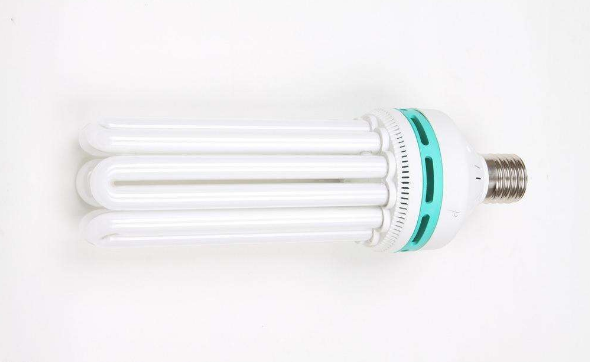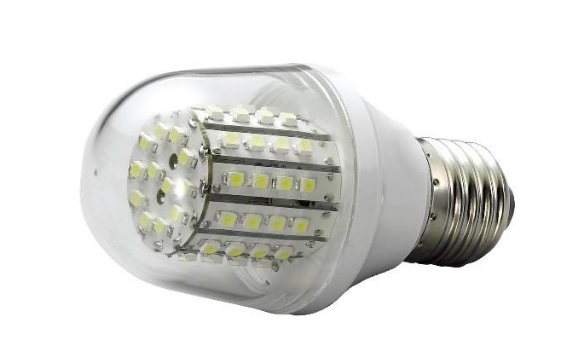Guide: In our daily lives, LED lamps have become essential lighting tools. Energy-saving lamps, often confused with LED lights, offer some benefits but are not as efficient or long-lasting. While they can provide brightness and convenience at night, it's important to understand the differences between energy-saving lamps and LED lamps. Many people think they are similar, but in reality, there are significant distinctions. Let’s explore the advantages of LED energy-saving lamps together!

LED Energy Saving Lamp
What Are the Benefits of LED Energy-Saving Lamps?
1. High Luminous Efficiency: LED light sources are highly efficient compared to traditional bulbs. Incandescent lamps produce 12-24 lumens per watt, while fluorescent lamps reach 50-70 lumens per watt. Sodium lamps go up to 90-140 lumens per watt, but most of the power is lost as heat. LEDs, on the other hand, can achieve 50-200 lumens per watt, with excellent monochromatic properties and no need for filters, allowing them to emit pure colored light directly.
2. Low Power Consumption: Each LED consumes only 0.03-0.06 watts, operating on DC voltage (1.5-3.5 volts) with a current of 15-18 mA. This makes them suitable for high-frequency operation. Compared to incandescent bulbs, LEDs use about one ten-thousandth of the power, and even less than half of fluorescent lamps. According to estimates from Japan, replacing half of their incandescent and fluorescent lamps with more efficient LEDs could save up to 6 billion liters of crude oil annually.
3. Long Lifespan: Unlike traditional lamps that rely on filaments or gas discharge, LEDs are solid-state devices. They are small, lightweight, and encapsulated in epoxy resin, making them resistant to shocks and vibrations. The average lifespan of an LED is up to 100,000 hours, equivalent to 5-10 years of continuous use, significantly reducing maintenance costs and the need for frequent replacements.
4. Safe and Reliable: LEDs emit very little heat, making them "cold light sources" that can be safely touched. They allow precise control over light color, direction, and intensity, with no glare or harmful substances like mercury or sodium, making them safer for health and the environment.
5. Environmentally Friendly: As a solid-state lighting solution, LEDs are impact-resistant, recyclable, and do not pollute. They reduce emissions of harmful gases such as sulfur dioxide, nitrogen oxides, and carbon dioxide, contributing to a cleaner living environment. LEDs are considered a "green lighting source" and come in various technologies, including RGB mixing, phosphor-based white LEDs, and UV-excited multi-color LEDs.

LED Energy Saving Lamp
6. Highly Energy-Efficient: Energy savings are the primary reason for choosing LED technology. Although LEDs may cost more upfront, the energy savings typically pay back the investment within a year. Over the next 4-9 years, you can enjoy significant long-term energy savings. This makes LEDs a smart and sustainable choice for both residential and commercial use.
What Is the Difference Between Energy-Saving Lamps and LED Lamps?
Energy-saving lamps, commonly known as CFLs (Compact Fluorescent Lamps), are designed to be more energy-efficient than traditional incandescent bulbs. LED lamps, on the other hand, use Light Emitting Diodes as the light source and are considered a newer, more advanced lighting technology.
CFLs typically have a luminous efficacy of 50-65 lumens per watt, while LEDs currently range from 100-130 lumens per watt. However, due to the directional nature of LEDs, the effective output of a complete LED lamp is usually around 65-80 lumens per watt. While the price of a CFL is generally 2-4 times lower than that of an LED with the same light output, the power consumption difference is more significant.
In terms of lifespan, LEDs outperform CFLs. The nominal life of a CFL is 6,000-12,000 hours, while LEDs can last 10,000-20,000 hours. However, the quality of products sold in different regions varies, so exact comparisons can be difficult. Despite this, LEDs remain a superior choice for long-term performance and efficiency.
TFT LCD Arduino
TFT LCD Arduino,Active Matrix,LCD Module
ESEN HK LIMITED , https://www.esenlcd.com